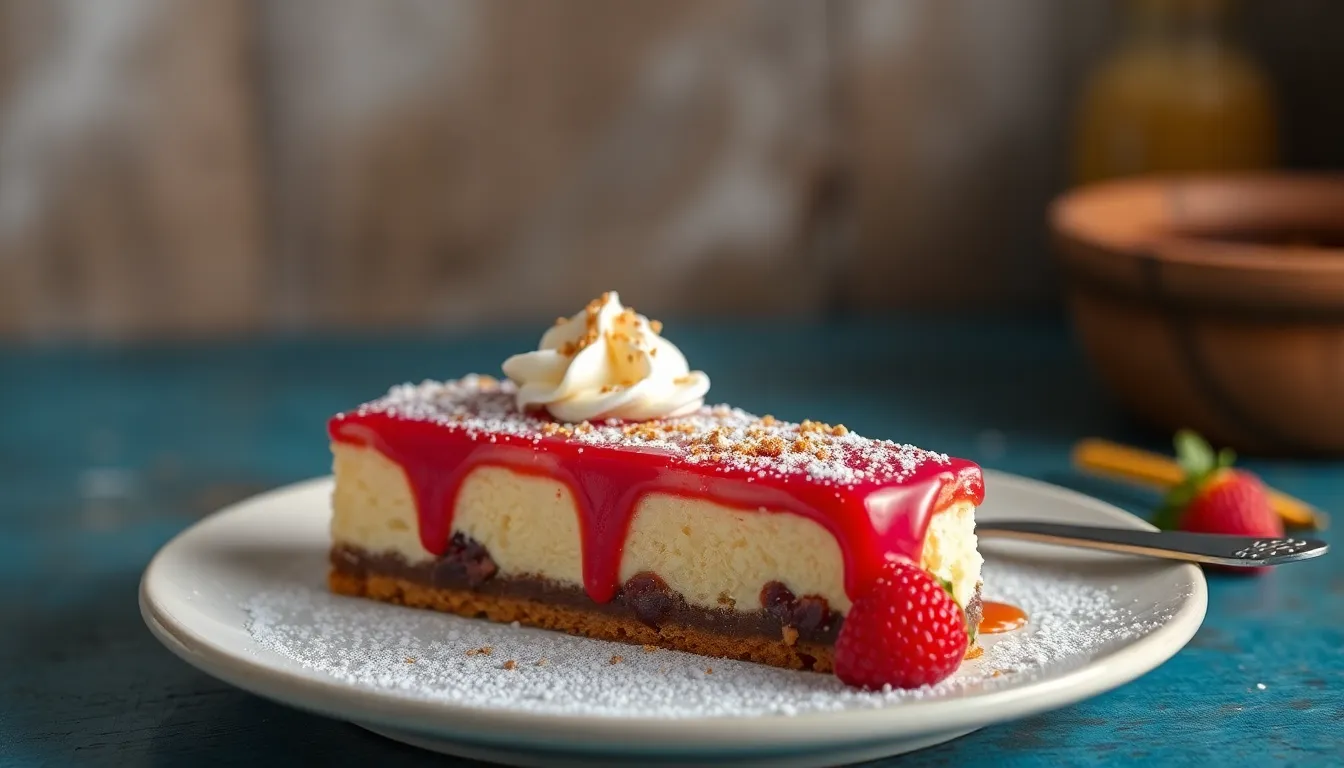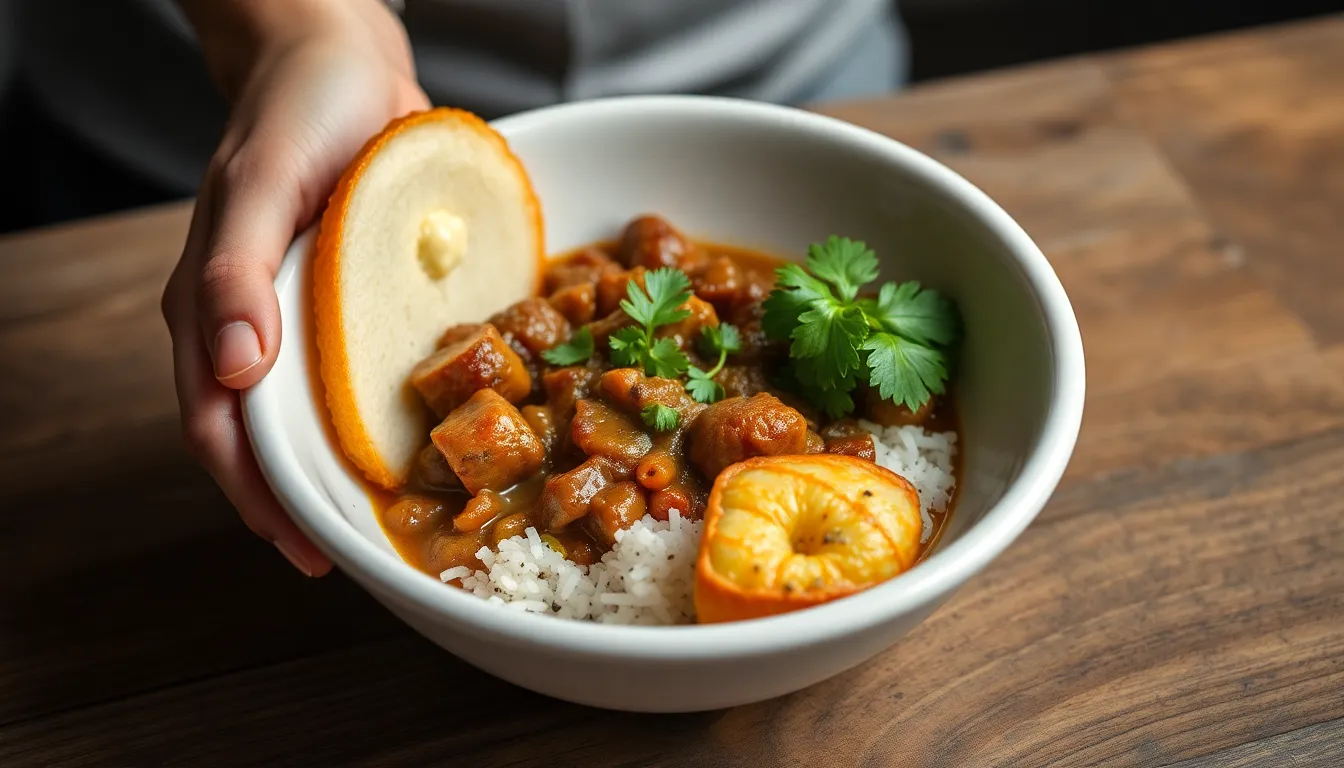The Fusion of Flavors: How to Incorporate Brazilian Cuisine into Your Everyday Cooking
Introduction: A Taste of Brazil at Home
Brazilian cuisine is a vibrant tapestry of flavors, colors, and aromas that reflects the country’s rich cultural heritage and diverse landscapes. From the earthy notes of black beans to the tropical sweetness of coconut, every ingredient tells a story. The importance of fusion cooking lies in its ability to expand our culinary horizons, allowing us to explore the world from our own kitchens.
In this article, we’ll embark on a flavorful journey through Brazilian cuisine, uncovering the essential ingredients that define it, and learning how to seamlessly weave these into our everyday cooking. Get ready to elevate your meals with the zest and flair of Brazil!
Chapter 1: The Soul of Brazilian Cuisine
1.1 The Ingredients that Define Brazil
Brazilian cuisine is built on a foundation of unique and flavorful ingredients that are not only delectable but also steeped in history. Here are some staples:
- Black Beans: A staple in many Brazilian households, known for their earthy flavor and high protein content.
- Cassava: This versatile root, also known as yuca, is used in various forms, from flour to fritters.
- Coconut: Adds a creamy sweetness to both savory dishes and desserts.
- Fresh Herbs: Ingredients like cilantro and parsley are essential for brightening flavors.
1.2 Traditional Dishes to Inspire Your Kitchen
Brazilian cuisine is rich with iconic dishes that provide a perfect starting point for any culinary adventure:
- Feijoada: A hearty black bean stew traditionally made with various cuts of meat, served with rice and orange slices.
- Moqueca: A fragrant seafood stew cooked with coconut milk, tomatoes, and palm oil.
- Pão de Queijo: Delicious cheese bread balls that are gluten-free and crispy on the outside.
Essential Brazilian Ingredients
| Ingredient | Flavor Profile | Common Uses |
|---|---|---|
| Black Beans | Earthy, hearty | Feijoada, soups, salads |
| Cassava | Mild, nutty | Fritters, flours, sides |
| Coconut | Sweet, creamy | Desserts, curries, drinks |
| Cilantro | Fresh, citrusy | Salsas, salads, garnishes |
Chapter 2: Fusion Cooking 101: The Art of Combining Cuisines
2.1 What is Fusion Cooking?
Fusion cooking is a culinary approach that combines elements from different culinary traditions, creating new and exciting dishes. It invites creativity and innovation, allowing cooks to experiment with flavors, textures, and techniques.
To maintain the integrity of flavors while blending cuisines, consider the following principles:
- Respect the core ingredients of each cuisine.
- Balance the boldness of flavors.
- Experiment with different cooking techniques.
2.2 Finding Balance: Harmonizing Flavors
When harmonizing Brazilian flavors with everyday ingredients, there are a few tips to keep in mind:
- Use black beans as a base for salads and grain bowls.
- Incorporate coconut milk to add creaminess to soups and stews.
- Pair fresh herbs with grilled meats and roasted vegetables for a burst of freshness.
Here are some suggested pairings that work well with Brazilian components:
- Black Beans + Quinoa + Mango
- Coconut + Curry Powder + Chicken
- Cilantro + Lime + Fish
Chapter 3: Everyday Brazilian-Inspired Recipes
3.1 Breakfast: Start Your Day with a Brazilian Twist
Kickstart your morning with Brazilian-style scrambled eggs, known as Ovos Mexidos. This dish is simple yet packed with flavor.
Recipe: Ovos Mexidos
- 2 eggs
- 1 tablespoon butter
- ¼ cup diced tomatoes
- ¼ cup diced onions
- Salt and pepper to taste
- Fresh cilantro, for garnish
Instructions:
- Heat the butter in a skillet over medium heat.
- Add the onions and tomatoes, sautéing until soft.
- Whisk the eggs in a bowl, then pour into the skillet.
- Cook, gently stirring, until the eggs are scrambled to your liking.
- Season with salt and pepper, then garnish with cilantro before serving.
3.2 Lunch: A Fusion of Cultures on Your Plate
For lunch, try a Brazilian-inspired quinoa salad that brings together black beans and mango for a refreshing meal.
Recipe: Quinoa Salad with Black Beans and Mango
- 1 cup cooked quinoa
- 1 cup canned black beans, rinsed
- 1 cup diced mango
- ¼ cup chopped red onion
- ¼ cup chopped cilantro
- Juice of 1 lime
- Salt and pepper to taste
Instructions:
- In a large bowl, combine all ingredients.
- Toss until well mixed, adjusting seasoning as necessary.
- Serve chilled or at room temperature.
3.3 Dinner: A Feast of Flavors
For dinner, indulge in a quick Moqueca-inspired stir-fry packed with seafood and vibrant vegetables.
Recipe: Quick Moqueca-Inspired Stir-Fry
- 1 lb shrimp, peeled and deveined
- 1 cup sliced bell peppers
- 1 cup sliced zucchini
- 1 cup diced tomatoes
- 1 can coconut milk
- 2 tablespoons palm oil or olive oil
- Salt and pepper to taste
Instructions:
- In a large skillet, heat oil over medium-high heat.
- Add the bell peppers and zucchini, cooking until tender.
- Add the shrimp and tomatoes, sautéing until shrimp are pink.
- Pour in the coconut milk, seasoning with salt and pepper. Simmer for 5 minutes.
- Serve over rice or with crusty bread.
3.4 Sweet Treats: Dessert with a Brazilian Flair
End your meal on a sweet note with Brigadeiros, Brazil’s beloved chocolate truffles.
Recipe: Brigadeiros
- 1 can sweetened condensed milk
- 2 tablespoons cocoa powder
- 2 tablespoons unsalted butter
- Chocolate sprinkles for rolling
Instructions:
- In a saucepan, combine condensed milk, cocoa powder, and butter.
- Cook over medium heat, stirring constantly until thickened (around 10 minutes).
- Let cool, then butter your hands and shape into small balls.
- Roll in chocolate sprinkles and place in paper cups.
Chapter 4: Tips for Incorporating Brazilian Flavors
4.1 Where to Find Authentic Ingredients
To successfully incorporate Brazilian flavors into your cooking, finding authentic ingredients is key:
- Check local international grocery stores for Brazilian staples.
- Explore online retailers like Amazon and specialty food websites.
- Visit farmers’ markets for fresh herbs and produce.
4.2 Cooking Techniques Unique to Brazilian Cuisine
Understanding certain cooking techniques can elevate your Brazilian dishes:
- Grilling: A popular method for meats and vegetables, giving a smoky flavor.
- Slow-cooking: Ideal for stews like Feijoada, allowing flavors to meld.
- Sautéing: Essential for base flavor development in many dishes.
Conclusion: Embracing the Fusion Journey
As we’ve discovered, the beauty of blending Brazilian cuisine into our daily meals lies in the vibrant flavors and the joy of cooking. Experimenting with these recipes and ingredients can lead to exciting culinary creations that reflect your personal taste.
We encourage you to step out of your comfort zone, try your hand at fusion cooking, and share your experiences with us. What Brazilian-inspired dishes have you created? Let us know in the comments below!
Call to Action: Join the Flavor Revolution!
Subscribe to our blog for more fusion recipes and embark on a delicious culinary journey with us. Together, we can explore the world, one dish at a time!




